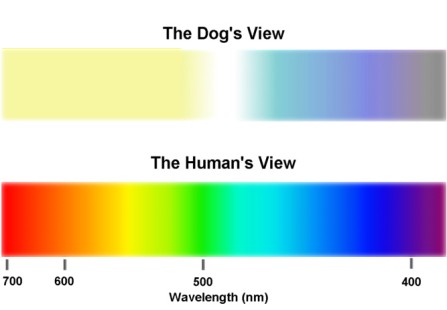Victoria A. Raucci
The retina is the rear part of the eye that contains the photoreceptor cells that respond to light. There are two types of photoreceptors:rodsandcones.
To compare the photoreceptors between the eyes of humans and dogs, we need to examine the needs and environment of each species. Humans, as diurnal creatures, mainly move about in a brightly lit environment. Many dogs have been bred to utilize their keen sense of movement, in addition to their sharp sense of smell. Humans have more rods in their eyes than cones, but dogs have as much as three times as many rods as we do, resulting in much better sense of motion.
The human cones are not as sensitive to light as the rods. However, our cones are most sensitive to one of three different colors (green, red or blue). Signals from the cones are sent to the brain which then translates these messages into the perception of color. Cones, however, work only in bright light and are used for color vision and for seeing fine details. A person who is "color blind" cannot tell some colors apart from others, and is either missing a certain type of cone in the retina or one type of cone may be weak.
33
Dogs do not have as many cones as humans, nor do they have the three kinds of cones that humans have that allow us to see red, blue, and green wavelengths. They do not see in black and white as most people believe, rather, they only have two types of cones, those that are sensitive to blue and the other to a mixture of green and yellow. (See figure 1 for the range of colors as seen by a dog, compared to a human's view of color.)

Figure 1: Ranges of color from a dog's view compared to a human's view
(Views provided by Caroline Zeiss, Yale University but it’s all over the internet)
Humans are often baffled when their canine friends cannot see a bright orange or red toy that is right in front of them. While the toy is highly visible to the human, the color of the toy does not register with the dog. The image blends in with the grass. However, if the toy is given a slight nudge, the dog will pick up on the movement because of the distribution and excessive number of rods in its eye.
While the teaching of concepts related to the photoreceptors of the eye, opportunities arise to model the questioning of information we do not know. For example, the questions to the students might include: Is one person's view of color exactly the same as everyone else's? Can there be deviations in the number of cones from one person to the next that would alter the perception of color? Are there gender differences between the perceptions of color? Why do humans even need to see color? It is important to constantly model that questioning continues to be the basis for the search of new information.